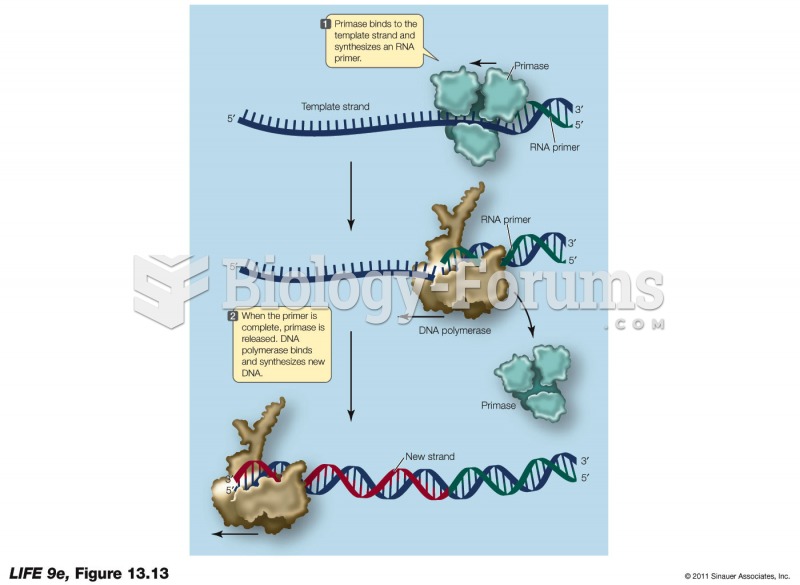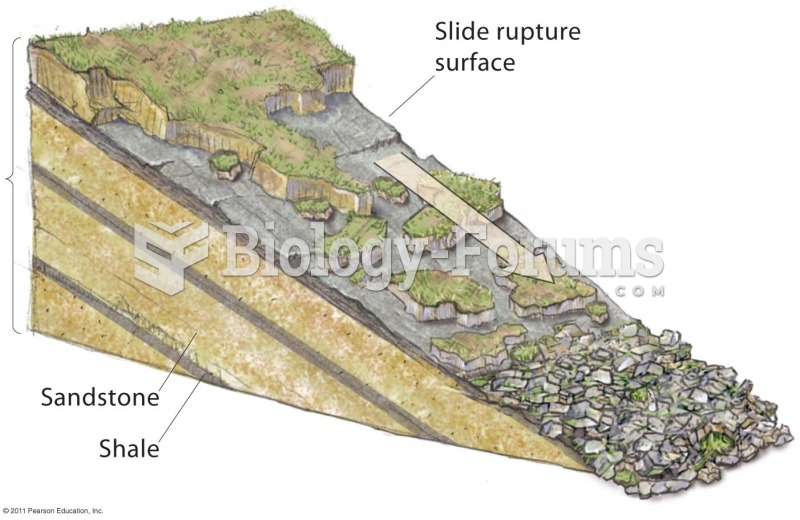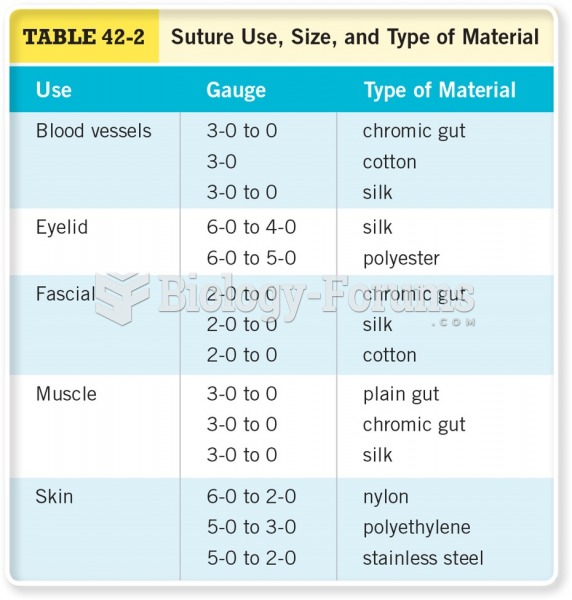Answer to Question 1
D
Answer to Question 2
Surface currents develop from friction between the ocean and the wind that blows across its surface. Only about 2 of the wind's energy is transferred to the ocean surface, so a 50-knot wind will create a 1-knot current. If there were no continents on Earth, the surface currents would generally follow the major wind belts of the world. In each hemisphere, therefore, a current would flow between 0 and 30 degrees latitude as a result of the trade winds, a second would flow between 30 and 60 degrees latitude as a result of the prevailing westerlies, and a third would flow between 60 and 90 degrees latitude as a result of the polar easterlies. In reality, ocean surface currents are driven by more than just the wind belts of the world. The distribution of continents on Earth is one factor that influences the nature and direction of flow of surface currents in each ocean basin. Most water involved in deep-ocean currents (thermohaline circulation) originates in high latitudes at the surface. In these regions, surface water becomes cold and its salinity increases as sea ice forms. When this surface water becomes dense enough, it sinks, initiating deep-ocean currents. Once this water sinks, it is removed from the physical processes that increased its density in the first place, so its temperature and salinity remain largely unchanged for the duration it spends in the deep ocean. As these surface water masses become dense and are sinking (downwelling) in high-latitude areas, deep- water masses are also rising to the surface (upwelling). Because the water temperature in high-latitude regions is the same at the surface as it is down below, the water column is isothermal, there is no thermocline or associated pycnocline, and upwelling and downwelling can easily occur.







